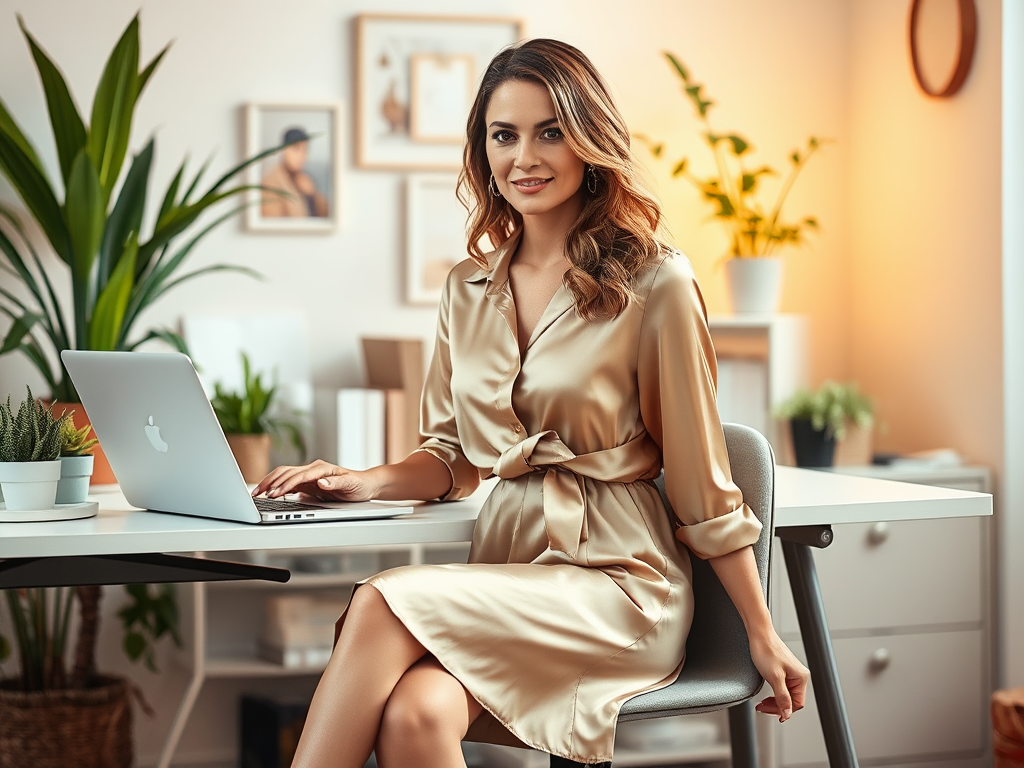In today’s professional landscape, the nuances of dressing appropriately have evolved significantly. Women navigating the business world often find themselves treading the fine line between professional attire and casual comfort. Business casual is increasingly becoming the norm in many workplaces, allowing for a fusion of style and professionalism. But what does business casual truly mean? Understanding its key components is essential for making a lasting impression. This article delves into the crucial elements that define women’s business casual attire and provides practical examples for a polished look.
The concept of business casual varies widely across companies and industries. It’s not just a matter of what you wear but also how you wear it. The purpose behind business casual is to project professionalism without necessarily succumbing to the rigidity of traditional business attire. Knowing the essential elements can help you curate a wardrobe that meets the corporate expectation while letting your personality shine through. Whether you’re heading to an important meeting or simply working in an office environment, the right outfit can elevate your confidence and productivity.
Key Elements of Business Casual Attire

When considering your business casual wardrobe, you should focus on several key elements that contribute to a polished yet approachable appearance. First and foremost is the selection of fabrics. The right materials not only affect your comfort but also convey your professionalism to colleagues and clients alike. Here are a few fabric options worth considering:
- Cotton: This breathable fabric is versatile, making it ideal for blouses and tailored pants.
- Wool: A classic choice for blazers and skirts, wool offers structure without sacrificing warmth.
- Silk: For those special occasions, silk can enhance any outfit, adding a touch of elegance.
Next comes color and pattern selection. Your choice of colors can make a significant impact on your overall look. While solid colors tend to offer a timeless and sophisticated feel, soft shades can help keep things light and approachable. Be mindful of patterns that you choose, as they can either elevate your look or distract from your professionalism.
| Color | Feel |
|---|---|
| Navy | Professional |
| Pastels | Fresh |
| Earth Tones | Warm |
Fit and silhouette are equally crucial. Wearing clothes that fit well will make you look polished and self-assured. This means opting for tailored pieces that avoid the pitfalls of being baggy or overly tight. In this regard, structured garments often work wonders. For example, a tailored blazer paired with a well-fitted skirt can create a clean and effective look. Remember to consider length guidelines as well; skirts and dresses that fall to the knee or below are generally advisable.
Examples of Women’s Business Casual Attire

Understanding the essential elements is just the beginning; seeing examples can solidify your grasp on business casual attire. Let’s break down typical clothing items that fit within this dress code. When it comes to tops, consider the following:
- Blouses: Choose silk or cotton options in solid colors or subtle patterns to keep it classy.
- Camisoles: These can be layered under blazers, adding sophistication without compromising professionalism.
- Sweaters: A warm knit or cardigan can help keep your look cozy during colder months.
For bottoms, here are some reliable choices:
- Dress Pants: Tailored slacks in neutral colors like black or gray can create a streamlined appearance.
- Skirts: Seek out knee-length A-line or pencil skirts for that perfect blend of style and professionalism.
- Chinos: A versatile choice that offers comfort without sacrificing a polished look.
Footwear is equally important. Here are a few shoe styles that are business casual-approved:
- Flats: Comfortable but chic loafers or ballet flats are perfect for long hours at the office.
- Low Heels: Block or kitten heels provide support while adding elegance.
- Boots: Ankle or knee-high options can be stylish, especially during fall and winter.
Accessories to Consider
Though clothing lays the foundation for your business casual wardrobe, accessories can elevate your look and make a solid statement. When selecting accessories, aim for simplicity and elegance. Jewelry should be understated; think stud earrings or a delicate necklace. A structured tote or satchel can effectively carry your work essentials while looking chic. Additionally, a fashionable yet functional belt can create distinction in a loose-fitting top or dress.
Conclusion
Grasping the essence of business casual attire for women offers the perfect balance between professionalism and personal expression. By focusing on key elements such as fabric, color, fit, and suitable examples, you can confidently navigate the complexities of corporate dressing. Remember to let your personality shine through while adhering to the guidelines of business casual. As workplaces evolve, being well-prepared will ensure you remain a step ahead, exuding confidence in every situation.
Frequently Asked Questions
- What is the difference between business casual and smart casual?
Business casual is typically more formal, requiring tailored clothing, while smart casual blends casual elements with a polished appearance. - Can I wear jeans for business casual?
Yes, but opt for dark-wash, tailored jeans without distressing or embellishments. - Are graphic tees acceptable in a business casual setting?
Generally, graphic tees are not advisable unless styled underneath a blazer and paired with more formal items. - Should I wear makeup for a business casual setting?
Makeup is optional, but a natural look is often preferred in professional settings. - How should I style my hair for business casual?
Aim for a neat appearance; hairstyles such as a tidy bun, ponytail, or loose waves are typically acceptable.
